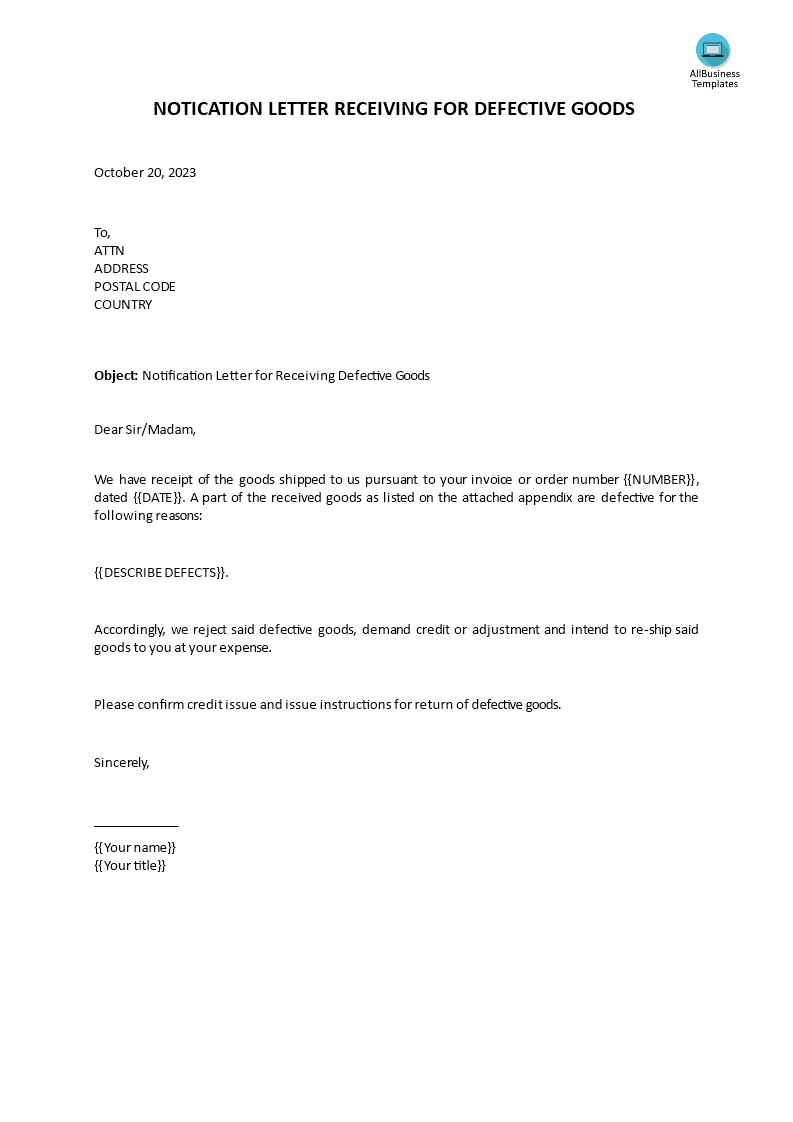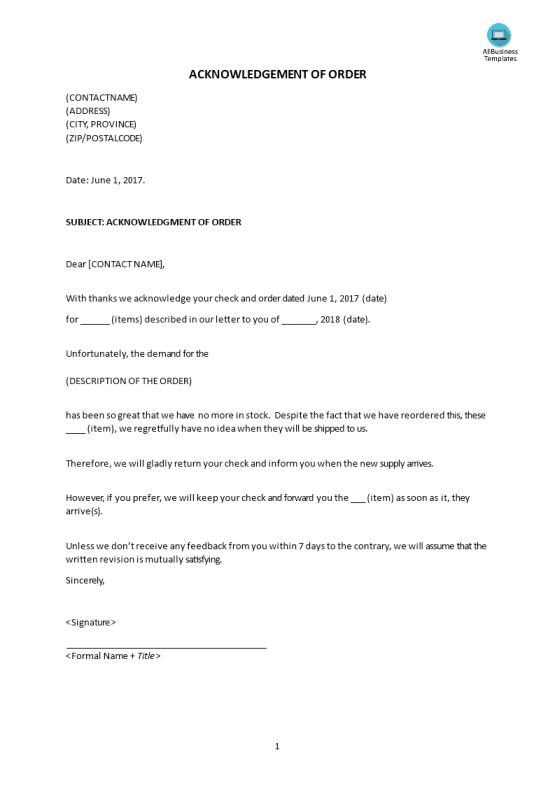Received Defective Goods List Template
Save, fill-In The Blanks, Print, Done!

Download Received Defective Goods List Template
Microsoft Word (.docx)Or select the format you want and we convert it for you for free:
- This Document Has Been Certified by a Professional
- 100% customizable
- This is a digital download (26.46 kB)
- Language: English
- We recommend downloading this file onto your computer.
Do you need a List with a received defective goods template that you can send to your supplier after receiving defective goods? Is your company in need of a Received Defective Goods List Template? We have a template that you can download and use. It's free to download and you can customize it to fit your needs. It's a great way to keep track of defective products and make sure they don't go to waste. Download our template now!
The Received Defective Goods List is an important tool for documenting and managing quality control issues in the supply chain. It serves several purposes:
A Received Defective Goods List is a document used in supply chain management, logistics, and procurement to record and document any defective or damaged items that are received from a supplier or vendor. When goods arrive at a receiving facility, such as a warehouse or distribution center, they are typically inspected for quality and condition. If any items are found to be defective, damaged, or not meeting the required specifications, they are listed on the Received Defective Goods List.
Key elements of a Received Defective Goods List include:
- Item Details:
- Description of the defective goods, including the product name, SKU (Stock Keeping Unit) or part number, and a brief description of the issue.
- Quantity:
- The number of defective items received. This can include units, cases, pallets, or other relevant measurement units.
- Condition:
- A description of the defect or damage, including specifics about the condition of the items. This might include information about broken packaging, visible damage, or functional issues.
- Purchase Order Information:
- Reference to the original purchase order or order number associated with the shipment of goods.
- Vendor/Supplier Information:
- Details about the supplier or vendor from whom the defective goods were received. This may include the supplier's name, contact information, and any identification numbers or codes.
- Date of Receipt:
- The date on which the defective goods were received.
- Disposition:
- Information about what action will be taken with the defective goods. This might include returning the items to the supplier, arranging for repairs or replacements, or disposing of the items.
- Responsible Party:
- Identification of the individual or department responsible for handling the defective goods and overseeing the resolution process.
- Remarks or Comments:
- Any additional comments or notes are relevant to the defective goods, such as details about inspections or communications with the supplier.
The Received Defective Goods List is an important tool for documenting and managing quality control issues in the supply chain. It serves several purposes:
- Quality Control: It helps maintain product quality by identifying and addressing defective goods promptly.
- Documentation: It provides a record of defective items received, which can be used for tracking, reporting, and communication with suppliers.
- Resolution: It guides the process of resolving issues with the supplier, whether that involves returns, replacements, refunds, or other corrective actions.
- Data Analysis: Over time, the data from Received Defective Goods Lists can be analyzed to identify patterns and trends related to supplier quality and performance.
- Compliance: It ensures compliance with contractual agreements and quality standards established with suppliers.
In addition to documenting defective goods, it's important to communicate the issues to the supplier promptly, following any agreed-upon procedures outlined in supply agreements or purchase contracts.
Download this List of defective goods now or check out our professional Notice Of Defective Goods template now!
DISCLAIMER
Nothing on this site shall be considered legal advice and no attorney-client relationship is established.
Leave a Reply. If you have any questions or remarks, feel free to post them below.
Related templates
Latest templates
Latest topics
- Excel Templates
Where do I find templates for Excel? How do I create a template in Excel? Check these editable and printable Excel Templates and download them directly! - Formal Complaint Letter of Harrasment
How do I write a formal complaint about harassment? Check out these formal complaint letter of harrasment templates here! - GDPR Compliance Templates
What do you need to become GDPR compliant? Are you looking for useful GDPR document templates to make you compliant? All these compliance documents will be available to download instantly... - Warning Letter to Employee
How to write a warning letter for employee? Download our Warning letter to employee templates here and modify according to your preferences. - Wedding Invitation Templates
How to get free wedding invitation templates? Where to find Do It Yourself Wedding invitations templates? Download them here!
cheese


